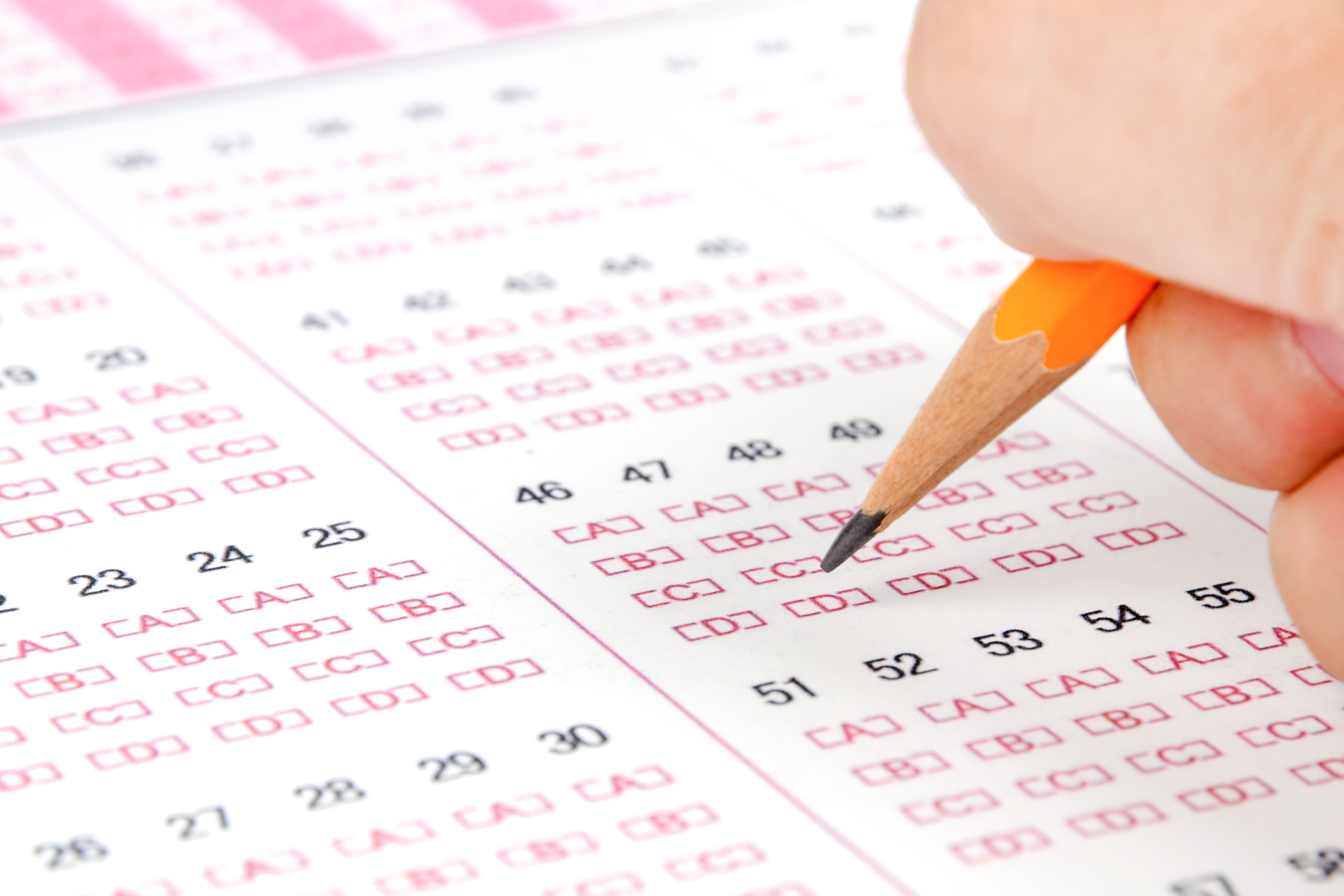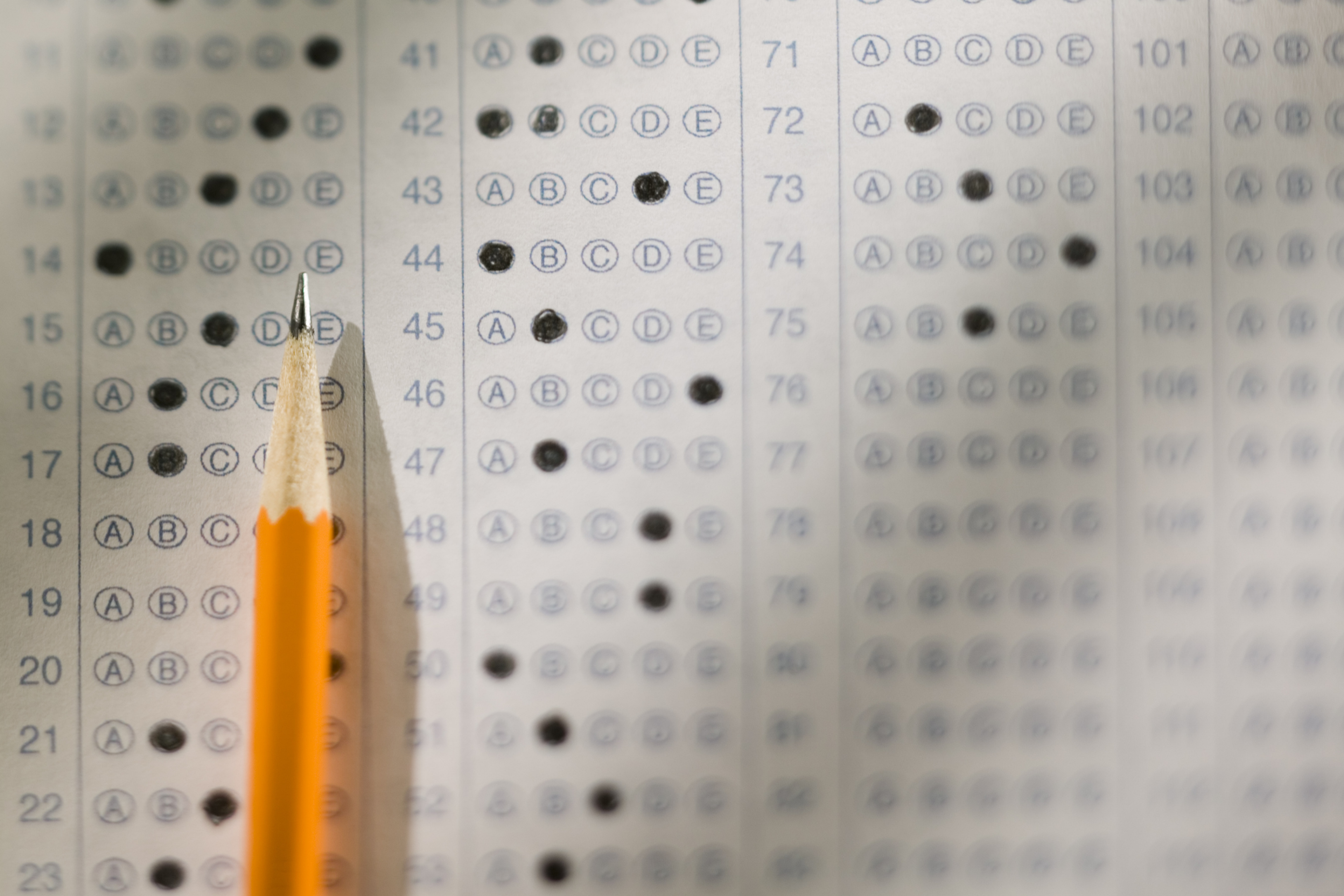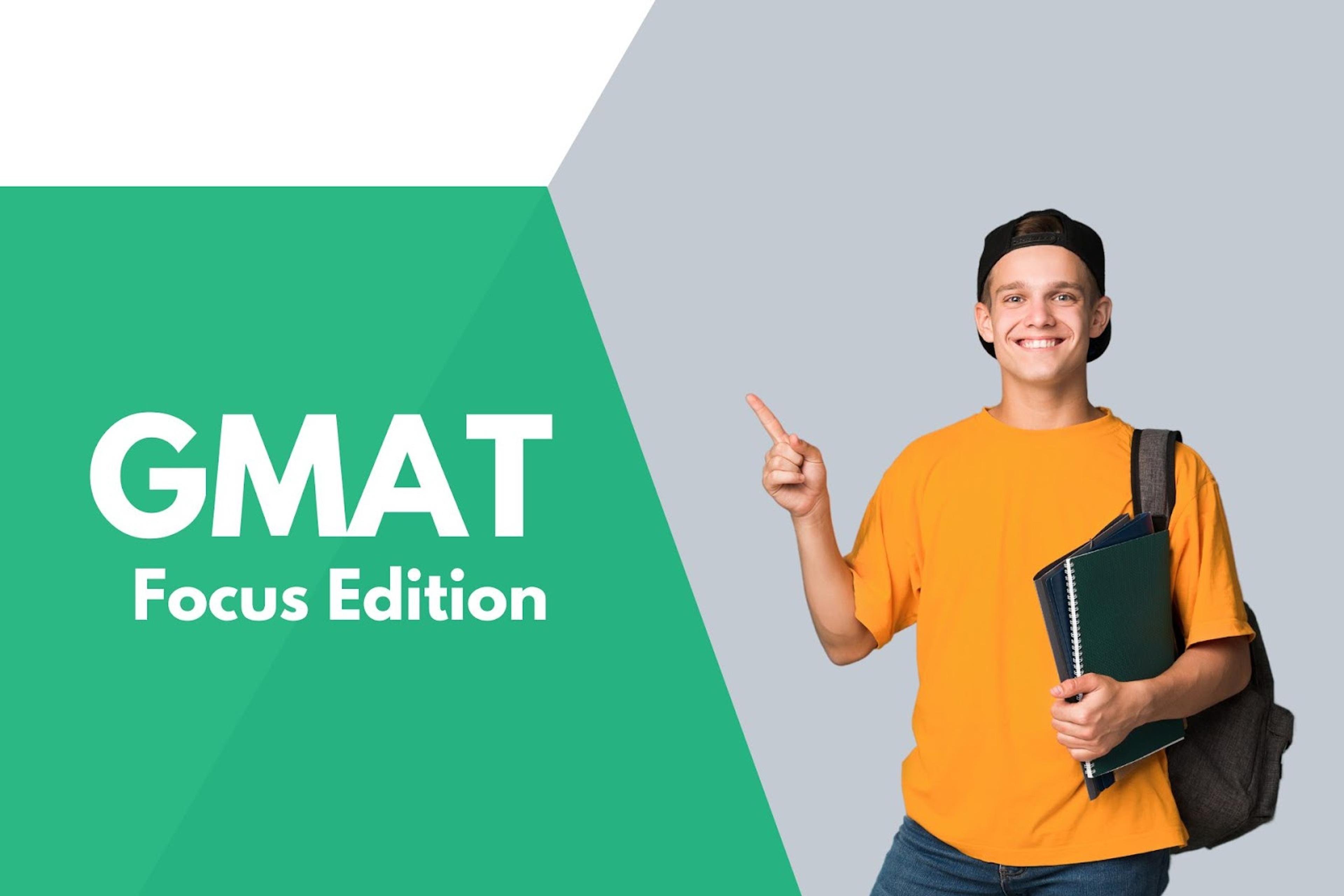
Table of Contents
This guide provides a comprehensive breakdown of GMAT CR questions, covering argument structure, question types, common traps, and expert techniques for finding the correct answer efficiently.
Read: GMAT Focus Edition: What You Need to Know
Breaking Down GMAT Critical Reasoning Questions
Every GMAT CR question presents a passage containing an argument, followed by a question stem that asks test takers to evaluate, strengthen, weaken, or analyze the given argument. Recognizing the underlying structure of reasoning questions is essential for selecting the correct answer efficiently.
Key Components of GMAT Critical Reasoning Questions
- Premise: A factual statement that supports the conclusion.
- Conclusion: The author’s conclusion, derived from the premise.
- Assumption: An unstated idea that the argument relies on.
- Evidence: Data or facts that reinforce the author’s argument.
- Logical Flaws: Weaknesses or gaps in the given argument that undermine its validity.
Understanding these elements helps test takers quickly determine the question type and apply an effective problem-solving strategy.
How to Answer GMAT Critical Reasoning Questions
To tackle GMAT CR questions effectively, test takers must follow a structured approach that ensures clarity, accuracy, and efficiency in selecting the correct answer. The following step-by-step strategy helps navigate these questions successfully.
Step 1: Read the Argument with Precision
A strong initial reading of the passage is essential for understanding the author’s argument. When reading the argument, focus on the following:
- Locate the Conclusion: Determine the author’s conclusion, which is the main point being argued.
- Identify Key Assumptions: Recognize unstated ideas that must be true for the argument to hold.
- Assess Logical Strength: Check whether the reasoning is valid or if there are logical gaps.
Test takers should not assume that the argument is logically sound—many GMAT critical reasoning questions are built around flawed reasoning that must be analyzed.
Step 2: Identify the Question Stem
The question stem provides clear guidance on how to approach the given argument.
- Strengthen and weaken questions require test takers to determine what strongly supports or undermines the author’s conclusion.
- Assumption questions focus on identifying the unstated premise that bridges the premises and conclusion of the argument.
- Inference-based questions test the ability to logically deduce information based on the passage without adding external assumptions.
- Paradox questions require test takers to resolve an apparent paradox by explaining contradictory or unexpected reasoning.
- Finally, boldface questions ask for an analysis of the roles of certain details in the argument, such as distinguishing between premises and conclusions.
Quickly recognizing the question type allows for a more targeted and efficient approach when selecting the correct answer.
Step 3: Predict the Correct Answer Before Reviewing Choices
Before reviewing the answer choices, it is useful to anticipate what the correct answer should accomplish. This technique helps test takers avoid misleading answer choices that introduce unnecessary complexity.
Many wrong answers contain "shiny penny" distractions—statements that appear relevant but do not directly address the question stem. Some options distort the author’s conclusion or present an assumption that is inconsistent with the given argument.
Additionally, extreme answer choices that include absolute language such as "always," "never," or "must" are often incorrect because GMAT arguments are typically built on nuanced reasoning.
Step 4: Evaluate Answer Choices Strategically
Each answer choice should be analyzed against the given argument using the following criteria:
- Does it directly address the question stem?
- Does it logically follow from the premise?
- Does it provide relevant evidence?
- Does it avoid extreme, absolute, or unsupported claims?
The best approach is the process of elimination—discard four wrong answers by identifying:
- Logical fallacies - Errors in reasoning that weaken the argument.
- Unsupported assumptions - Claims not backed by the passage.
- Irrelevant details - Information unrelated to the given argument.
Effective Ways to Strengthen and Weaken Arguments
Strengthening an Argument
A correct answer that strongly supports the given argument will provide additional evidence for the author’s conclusion, validate a key assumption in the reasoning, or eliminate alternative explanations.
When strengthening an argument, test takers should focus on the following statements:
- Does the choice reinforce the premises?
- Does it directly support the conclusion?
- Does it eliminate potential counterarguments?
A strong answer choice will always bridge logical gaps in the given argument, making it more compelling and well-supported.
Example – Strengthening an Argument
Argument: Studies show that students who study with flashcards perform better on vocabulary tests than those who do not. Therefore, using flashcards is the most effective method for improving vocabulary retention.
Question: Which of the following statements would most strengthen the argument?
(A) Students who use flashcards also tend to study for longer hours than those who do not.
(B) The study was conducted across multiple age groups and academic levels, making the findings widely applicable.
(C) Vocabulary test scores can improve through various study techniques, not just flashcards.
(D) Some students who do not use flashcards still perform well on vocabulary tests.
Correct Answer: (B) – This strengthens the argument by demonstrating that the study’s results are widely applicable, reinforcing the claim that flashcards are effective.
Weakening an Argument
A correct answer that weakens the argument will introduce counter-evidence that undermines the author’s argument, reveal flaws in the reasoning, or expose an incorrect assumption that weakens the conclusion.
To weaken an argument, test takers should analyze the following statements carefully:
- Does the choice contradict or discredit the author’s reasoning?
- Does it introduce an alternative explanation that weakens the premise-conclusion connection?
A strong weakening answer targets the fundamental logic of the argument, making the author’s conclusion less convincing.
Example – Weakening an Argument
Argument: A recent survey found that employees who work remotely report higher job satisfaction than those who work in an office. Therefore, remote work is the best option for increasing employee satisfaction.
Question: Which of the following statements would most weaken the argument?
(A) Remote workers often experience feelings of isolation, which can negatively impact overall job satisfaction.
(B) Companies that allow remote work tend to offer other benefits, such as flexible hours, that contribute to employee satisfaction.
(C) Employees who work in an office have better access to in-person networking opportunities, which can improve job growth.
(D) Some remote workers report feeling more productive when working from home.
Correct Answer: (B) – This weakens the argument by introducing an alternative explanation—that it may not be remote work itself increasing job satisfaction, but rather additional benefits that come with it.
How to Master Inference, Boldface, and Paradox Questions
Solving Inference-Based Critical Reasoning Questions
Inference-based GMAT critical reasoning questions require test takers to draw logical conclusions based solely on the passage. Unlike assumption or strengthen/weaken questions, inference questions do not introduce new arguments or require additional reasoning. Instead, test takers must identify what must be true given the available evidence.
To select the correct answer, keep these essential rules in mind:
- The answer must be directly supported by the given argument without requiring outside knowledge.
- It should not introduce new information or make unwarranted assumptions.
- The inference must stay within the logical scope of the passage, meaning it should neither overgeneralize nor go beyond what is explicitly stated.
Many incorrect answers introduce luxury items of logic—statements that seem reasonable but are not backed by the passage. These answer choices often exaggerate claims, extend conclusions beyond their logical limits, or introduce assumptions that are not explicitly stated. The key to solving inference-based questions is identifying the safest, most direct conclusion without adding unnecessary interpretation.
Analyzing Boldface Questions Effectively
Boldface questions test a test taker's ability to identify the function of specific statements within an argument. Each bolded statement plays a role—such as supporting, contradicting, or modifying another part of the passage. The most effective strategy for answering boldface questions is:
- Determine the main conclusion of the argument. Understanding the argument’s overall structure helps clarify how each bolded phrase fits into it.
- Analyze the role of each bolded statement. Is it a premise that supports the given conclusion, a counterpoint, an assumption, or an alternative perspective?
- Compare the relationships between the bolded statements. If two statements contradict each other, one may be an objection while the other is a response. If both support the argument, they may serve as reinforcing premises.
- Eliminate answer choices that misrepresent the role of the statements. GMAT boldface questions often include trap answers that reverse the function of the statements or misidentify the main argument.
Because these questions require precise logical analysis, test takers should practice recognizing how different parts of an argument interact.
Resolving Paradoxical Reasoning Questions with Confidence
Paradox questions present an apparent paradox—a situation where two pieces of information seem contradictory. The goal is to identify the missing link that explains why both facts can coexist.
The correct answer in paradox questions typically does one of the following:
- Identifies hidden assumptions that reconcile the contradiction.
- Explains contradictory evidence logically by providing an alternative explanation.
- Introduces missing information that removes the apparent inconsistency.
When approaching paradox questions, test takers should avoid answer choices that merely restate the argument without offering new insight. The correct response must actively resolve the contradiction, not just summarize the conflicting facts.
A common mistake in paradox questions is selecting an answer that supports one side of the paradox while dismissing the other. Instead, the best approach is to find a logical bridge that connects the seemingly opposing ideas.
Tips to Improve GMAT Critical Reasoning Skills
Achieving a high score on GMAT critical reasoning questions requires consistent practice, analytical thinking, and important skills for strategic test-taking. The following tips will help test takers refine their logical reasoning abilities and perform more effectively on the GMAT verbal section.
Use Official GMAT Practice Tests
Taking official practice tests is the most effective way to improve critical thinking skills and gain familiarity with GMAT critical reasoning tests. These tests provide exposure to authentic question structures, helping test takers develop strategies for assumption identification, argument evaluation, and logical flaw detection. Official GMAT questions also reflect the level of complexity and nuance seen on test day, making them the best resource for realistic practice.
Review Explanations for Every Question
Understanding why a selected answer choice is correct is just as important as recognizing why the other answers are incorrect. After each practice session, test takers should review detailed explanations to identify patterns in assumption recognition, evidence evaluation, and argument deconstruction. This process improves accuracy and reduces the likelihood of falling for trap answer choices in future GMAT CR questions. By analyzing mistakes systematically, test takers can refine their approach and improve their ability to select the correct answer with confidence.
Simulate Real Testing Conditions
Practicing GMAT CR questions under timed conditions is crucial for building mental endurance and focus. On test day, time management is a key factor in success, and test takers must be able to process arguments quickly, identify the question type, and eliminate wrong answers efficiently. To mirror the actual GMAT verbal section, practice sessions should be structured to include multiple questions in succession with strict time limits. This helps develop the ability to maintain accuracy under pressure and improves overall test performance.
Read: How to Study for GMAT: The GMAT Tutor's Guide
Master GMAT Critical Reasoning With Expert Guide for a High Score!
Achieving success in GMAT critical reasoning requires mastering argument evaluation, logical reasoning, and strategic elimination of wrong answers. By applying expert techniques, reviewing official practice tests, and recognizing common logical fallacies, test takers can significantly improve their GMAT verbal performance. However, for those aiming for top scores, self-study may not always be enough.
Many high-achieving test takers turn to top GMAT test prep coaches to refine their critical reasoning strategies and maximize their verbal section scores. Expert instructors provide personalized feedback, targeted practice strategies, and in-depth analysis of argument structures and answer choices—helping test takers avoid common traps, strengthen their logical reasoning skills, and improve test-taking efficiency.
Working with a top GMAT test prep coach can provide structured guidance, effective time management techniques, and access to high-quality study resources. With professional support, test takers can develop the confidence and precision needed to tackle GMAT critical reasoning questions with ease and achieve a competitive score on the GMAT verbal section.
For those serious about excelling on the GMAT, investing in expert coaching can be the game-changer that ensures consistent progress, fewer mistakes, and a higher overall score.
Read next:
- GMAT Verbal Guide: Reading Comprehension Questions
- Average GMAT Scores by Business School
- How Late Can You Take the GMAT/GRE for MBA Applications?
- GMAT Focus Score Chart — With Percentiles (2025)
FAQs
What are the main types of GMAT Critical Reasoning questions?
- Strengthen the Argument
- Weaken the Argument
- Find the Assumption
- Draw Inference/Conclusion
- Evaluate the Conclusion
- Resolve the Paradox
- Identify the Argument's Structure
- Complete the Argument
How much time should I allocate to each Critical Reasoning question during the GMAT?
- On average, it's advisable to spend about 1.5 to 2 minutes per Critical Reasoning question. Practicing under timed conditions can help improve speed and accuracy.
Can practicing with LSAT questions help improve GMAT Critical Reasoning skills?
- Yes, since LSAT questions are known for their complexity in logical reasoning, practicing with them can enhance critical thinking skills applicable to the GMAT.
What is the role of pre-thinking in answering Critical Reasoning questions?
- Pre-thinking involves anticipating potential answers before reviewing the options provided. This strategy can help in focusing on the argument's logic and identifying the correct answer more efficiently.
Are there common logical fallacies to be aware of in GMAT Critical Reasoning?
- Yes, recognizing common logical fallacies, such as circular reasoning, false dilemmas, and hasty generalizations, can aid in evaluating and dissecting arguments effectively.
How can non-native English speakers improve their performance in the Critical Reasoning section?
- Non-native speakers can benefit from enhancing their reading skills, expanding their vocabulary, and practicing with official GMAT materials to become familiar with the question formats and language nuances.
Is it beneficial to read the question stem before the argument in Critical Reasoning questions?
- Reading the question stem first can provide context and help focus on what to look for in the argument, making the analysis more targeted and efficient.











